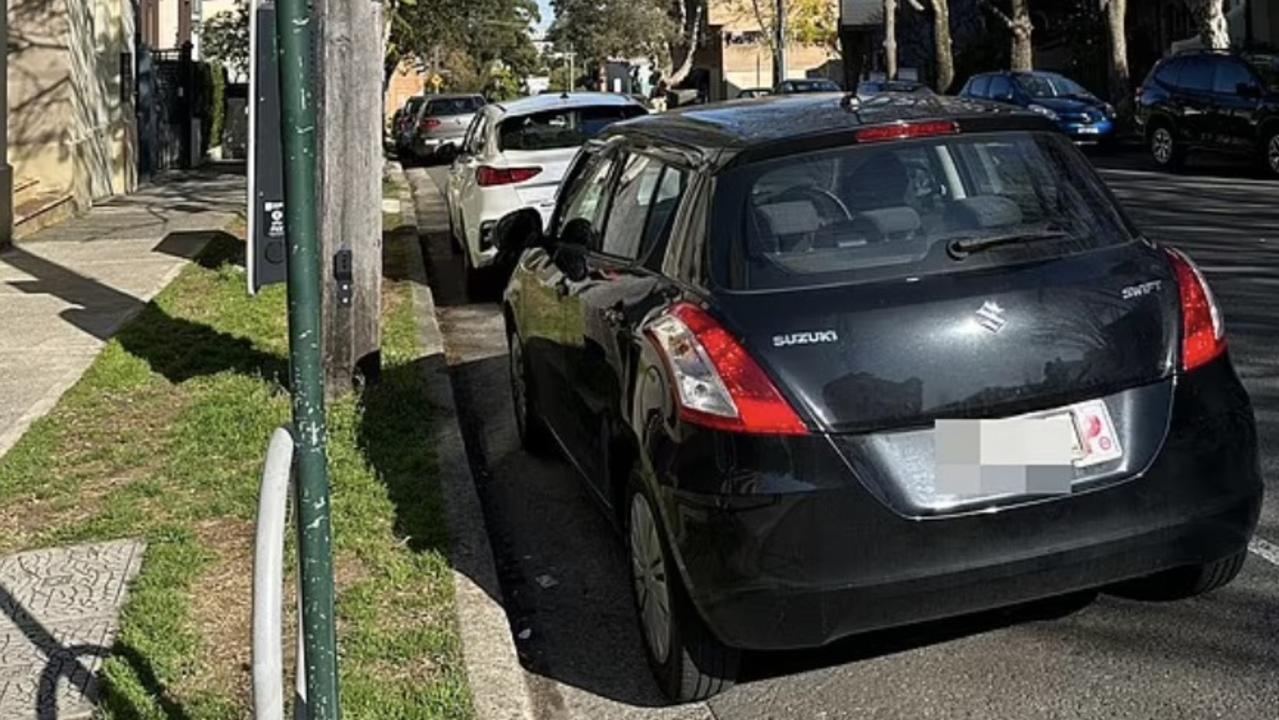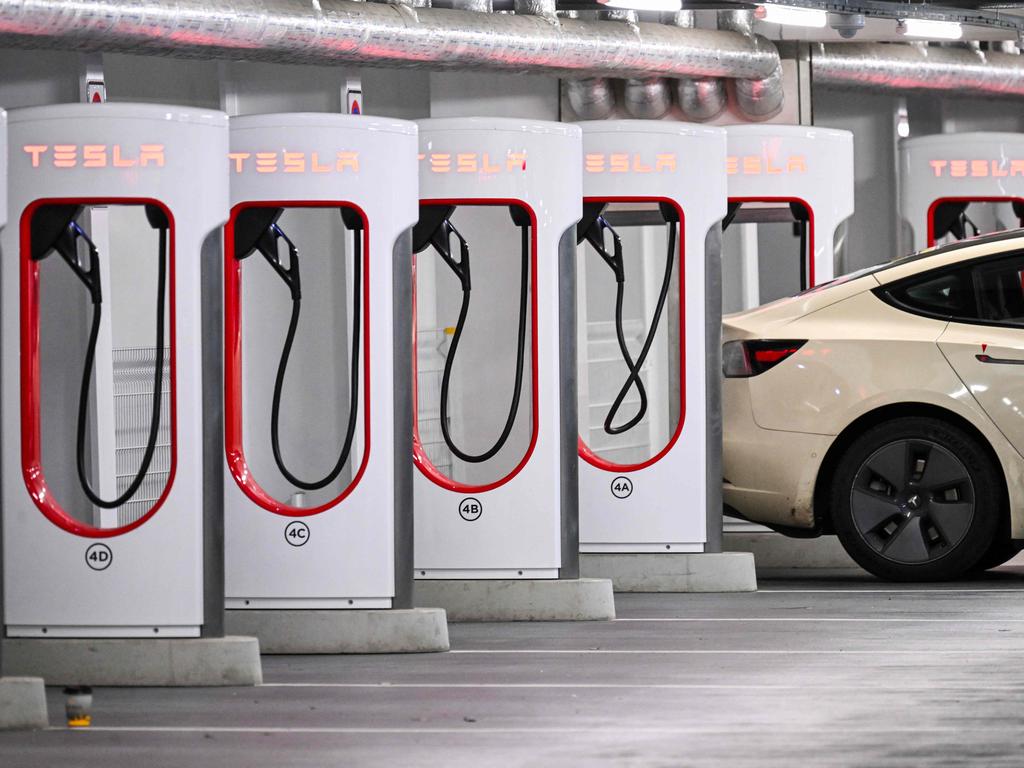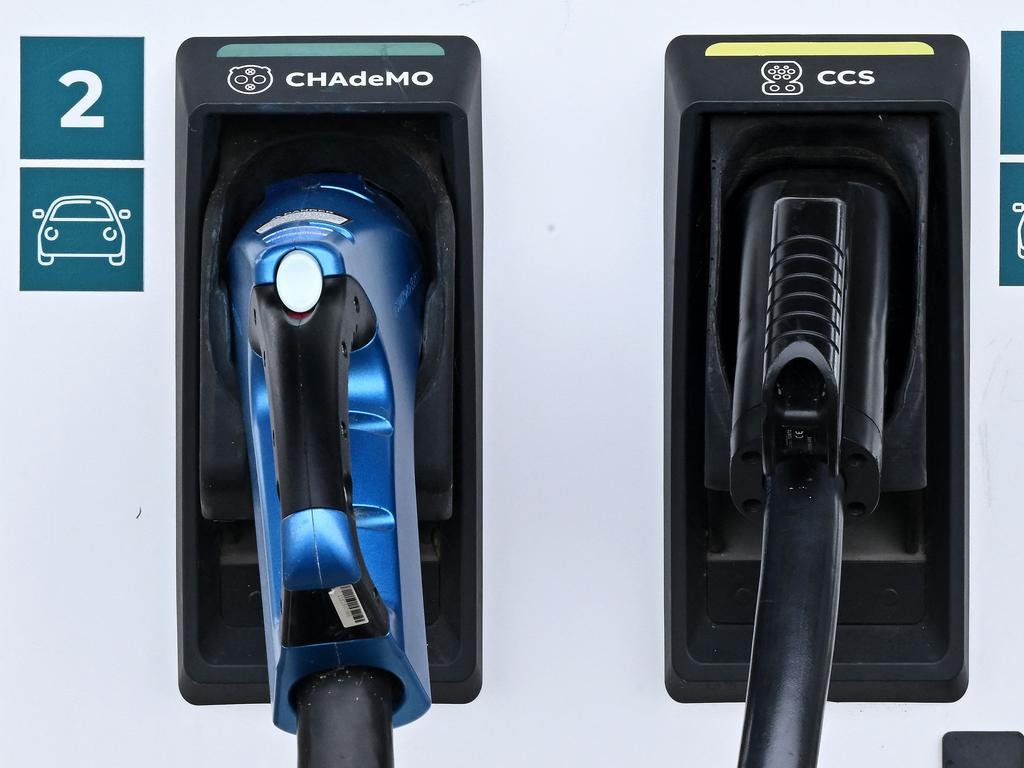Electric vehicle owner rages at ‘ICE-hole’ blocking Newtown charging station
A simple picture of a car parked in an inner-city suburb has summed up a major problem facing Australia in the years to come.

The availability of charging infrastructure for electric vehicles has made the age-old problem of finding a park in the inner city even worse.
Electric vehicle owners have now come up with a new term for internal combustion engine cars parked in front of the coveted public power points, labelling them “ICE-holes” online.
A recent incident in Newtown, Sydney came to light this week, when a car owner posted a picture of four non-electric cars blocking a charging port.
At the time of writing, Australia has 3669 public chargers across 2417 locations, dwarfed by other developed nations like Canada, which has more than 16,000 chargers in 7000 locations to tackle the nationwide EV boom.
It has seen the demand for charging points surge as more Australians transition away from traditional style engines.
Australia has witnessed a 269 per cent increase in EV sales from the beginning of 2023 to the end of June, with EVs constituting 8.4 per cent of all new car sales.
Two ICEholes pic.twitter.com/MuS0hQ0anb
— Evan (@fictillius) August 27, 2023
Australian states and territories are now imposing penalties on petrol and diesel car drivers who misuse electric-only parking spots.
In New South Wales, fines of up to $2200 can be slapped down for parking in EV designated spaces. The Australian Capital Territory (ACT) imposes an even heftier fine of $3200 for stopping in electric-powered car areas.
Queensland enforces fines of up to $2875 for the same offence, while Victoria charges just $369 or two penalty points.
Heavy fines are deemed essential to encourage EV adoption and prevent misuse of EV parking spaces, similar to blocking fuel pumps.
Penalties are applied to both non-EV drivers and EV owners who occupy charging spots without actively recharging.
Australia’s peak parking body has called for more electric charging stations on streets in 2022. Parking Australia chief executive Stuart Norman said it was a serious issue impacting millions across the country.


“We know that on-street charging is an issue for about three million Australian households,” he told NCA NewsWire.
“People plug in their car in the same way they plug their phone in. We know from people who have a driveway and garage that’s exactly what they do.
“But people who don’t have a driveway can’t do that.”
Mr Norman said situations like the ones seen in Manly and Millers Point can be “solved and it can be solved quite well”.
He called for public electric charging stations to be set up on streets across the country, which would run like parking meters because “effectively, that’s what it is”.
“You put a charger on the street, very much like a parking meter,” Mr Norman said.
“You then have software for people to pay. It can’t be free; people pay for petrol.
“You have a number of them in streets, you don’t just have one in someone’s house. And it must be a public asset; it can’t be private.
“Link it to enforcement; if someone stays too long, the council will have to fine them.”





